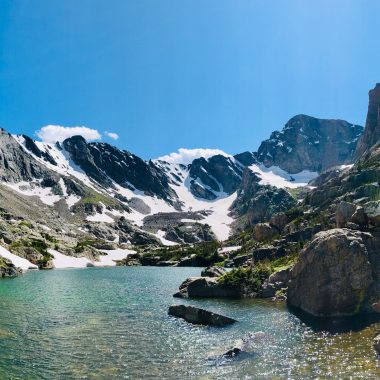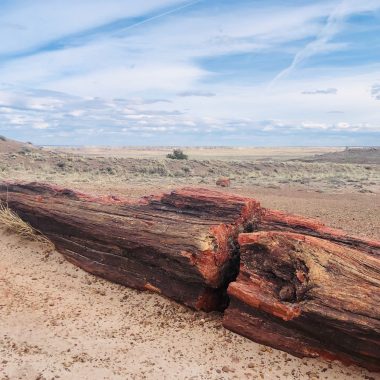After departing Mt. Hood, the remainder of my Ultimate oregon road trip would include a loop through Portland, down the Oregon coast, and then across central Oregon for the final stop at Crater Lake National Park. One really cool thing about doing a mega-loop around the state of Oregon is there is so much goodness all so close together. No stretch on this trip was more than a few hours of driving, which makes for a relaxing pace but still a lot of diversity in terms of geology, climate, and landcapes.
After a quick stop in Portland for happy hour with an old travel buddy, I headed west to the coast to make my way down to Oregon Dunes National Recreation area. I always make time for unexpected stops along the way, the first of which came just an hour outside of Portland at the Lewis and Clark National Historic Park. Those who know me, know I’m OCD about my National Park Passport and will never pass up the opportunity to add a stamp to it! So when I saw the sign for the Park, it was time for a detour! Fortunately the National Historic Park is just a few minutes off Hwy 101 after you pass the town of Warrenton. While an hour or so will allow you to peruse the museum and old quarters, you could easily spend a half-day here if you want to hike one of several trails at the park.

The National Historic Park is located at the site where Lewis and Clark ended their journey as the Columbia river exits into the Pacific Ocean. With all my recent travel, I’ve criss-crossed parts of the Lewis and Clark trail in Montana and Idaho, each time wondering what their incredible journey must have been like. The museum here is a treasure trove of information and artifacts that retrace their nearly 2 1/2 year trip across the continent. It also boasts a re-creation of the log cabins the team built to house themselves during a long wet winter in 1804/05.

After departing the Historic Park, it was about a four hour drive down the coast to get to the Sand Dunes National Recreation Area. We had reservations at Jessie M. Honey State Park, which is adjacent to the National Recreation Area with a very large forested campground.

With over 300 sites, it’s the second largest campground in the Oregon State Parks system. Fortunately, many of them are separated by thick foliage and trees which provides a serene and private feel. There are trailheads throughout the camping area that will take you out to the Dunes. You can also take a short drive down to the National Recreation area where there are additional trail heads. Fair warning, a mile hiking in the sand is like two on solid ground… your legs will get tired but it’s worth it! You’re also free to just roam the dunes here, which is what I did with my two pups.

After a couple of relaxing nights near the Dunes, it was time for the final leg of this Oregon road trip. We had two nights left to explore Crater Lake National Park. On the way, we came across another fun surprise stop, Salt Creek Falls. Salt Creek Falls, at 286 feet, is the second largest waterfall in Oregon (after Multnomah Falls). It’s hidden in thick pine forest along the Willamette highway, which cuts through the Deschutes National Forest. You can hike about 1 mile to get down to the base of the falls. Unfortunately, because of a recent rock slide, the last leg of this trail was closed… but we made it far enough down to get this great photo!

Central Oregon was experiencing some of the worst wildfires in recent memory and we arrived outside of Crater Lake to find our campground inundated with smoke (and hardly any campers!). It definitely gave it a last man on earth kind of apocalyptic feel. The smoke was thick but not unbearable, so I decided to stick it out and hope we wouldn’t be evacuated. The next morning I was surprised to wake up to a relatively blue sky and hoped the air would stay clear for my visit to Crater Lake. The fire gods were kind and the smoke lifted just long enough for me to get this mystical morning photo of the lake.

Crater Lake is the deepest lake in the United States, with a maximum depth of 1943 feet. It was formed around 7700 years ago when a 12,000 foot tall volcano, Mount Mazama, violently erupted and then collapsed into its own magma chamber. How cool is that?! Over time, rain and snow melt filled the remaining caldera basin, creating what we now know as Crater Lake. There are no inlets or outlets to the lake which keeps it pure and helps give it its unique azure blue color. Crater Lake’s water is so pure, you can see over 100 feet down from the surface. It is among the most pristine lakes in the world. It was absolutely stunning.
There is a lot to do here and you should plan for a full day if you visit. The loop drive around the lake takes several hours if you want to make all the stops. You can easily spend another couple of hours at the visitors center. And then if you’re feeling athletic, you can hike over 600 vertical feet down into the crater to reach the lakes shore via the Cleetwood Cove Trail.

By afternoon the fires were raging again, so I decided, with great trepidation, to leave a day early and head back home to Utah. We exited the North side of the park for the long drive home across Oregon and through Idaho. While it was a disappointing end, Oregon certainly did not disappoint and I can’t wait to do it again someday.







